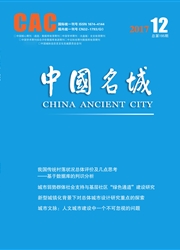

 中文摘要:
中文摘要:
文化遗产资源从单一的文化资源向复合性资源转化,其间与旅游业的关系日益密切。廊道遗产和集群式遗产因“申遗”而引发的旅游热潮在近年来持续升温。以廊道遗产为代表的“大型”、“线性”、“集群式”文化遗产已经进入多个学科研究者的视野,这是国家经济发展和社会文明进步的标志。北京在建设“世界城市”的宏观背景下,将北京城中轴线这一文化内容丰富、文化底蕴深厚的廊道遗产作为文化建设的核心载体。在城市现代化建设和旅游大潮的冲击下,北京城中轴线一方面承担着更加重要的历史使命与责任,另一方面也使得一些问题得以显现,如沿线非物质遗产保护、廊道节点缺失、游客过度集中、遗产的功能转化等。力图对这些问题进行分析并提出应对之策。
 英文摘要:
英文摘要:
Cultural heritage resources are transforming from single cultural resources to multi-type resources, and this process has an increasingly close relationship with the tourism industry in recent years. More and more scholars in different subjects devoted themselves to the corridor heritages, which are large-sized, linear and clustered cultural heritages. This trend marks the development of national economy and the progress of social civilization. Under the background of building World City, Beijing’s Axis, with profound cultural connotations, had already been the core carrier to cultural construction of Beijing City. Influenced by both city modernization and tourism boom, Beijing’ s Axis shoulders a greater historical mission and responsibility, while certain problems, such as conversation of intangible cultural heritage, lack of corridor nodes, overconcentration of tourists and functional shift of heritages, are emerging. This paper provides some countermeasures to these problems.
 同期刊论文项目
同期刊论文项目
 同项目期刊论文
同项目期刊论文
 期刊信息
期刊信息
